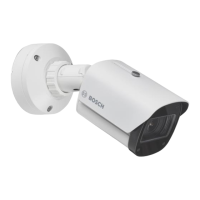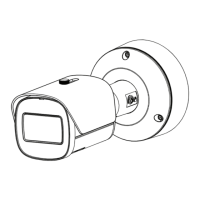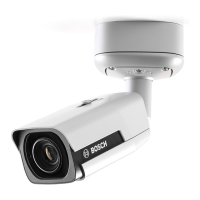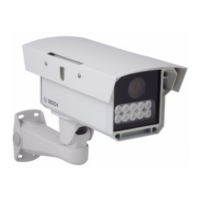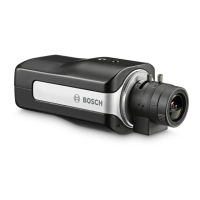DINION 3100i IR Configuration | en 47
Bosch Security Systems B.V.
User manual
2024-02 | V01 | DOC
Syslog
Server IP address
Enter the appropriate IP address of the server.
Server port (0 = Off)
Enter the number of the server port.
Protocol
Select the appropriate protocol: UDP, TCP, or TLS.
LLDP power configuration
This section shows a breakdown of the power values configured for the device.
The Additional power wattage can be adjusted in the respective input field. The default
value is 0.0W.
Click Set to apply the changes.
5.7.4 Network Management
SNMP
The camera supports two versions of Simple Network Management Protocol (SNMP) for
managing and monitoring network components, and can send SNMP messages (traps) to IP
addresses. The unit supports SNMP MIB II in the unified code.
Select either of the options that follow for the SNMP parameter:
– SNMP v1 legacy
– SNMP v3
If you select either of the SNMP version, but do not enter an SNMP host address, the
camera does not send messages (traps) automatically, but only replies to SNMP requests.
Select Off to deactivate the SNMP function.
1. SNMP host address / 2. SNMP host address
If you wish to send SNMP traps automatically, enter the IP addresses of one or two required
target units here.
SNMP v1 legacy
When you select SNMP v1 legacy in the field SNMP, the fields Write community and SNMP
traps appear.
Write community
Type the password for Write community to allow the exchange of data between connected
devices.
SNMP traps
You can select which traps are to be sent.
1. Click Select. A list is opened.
2. Click the checkboxes to select the required traps. All the checked traps will be sent.
3. Click Set to accept the selection.
SNMP v3
When you select SNMP v3 in the field SNMP, the tabs User and Trap user show.
The same fields show in both tabs.
The SNMP engine ID field also appears, indicating the unique identifier of the SNMP entity.
User name
Enter the appropriate user name.
Authentication protocol
Select the appropriate authentication protocol: None, MD5, or SHA1.
Authentication password
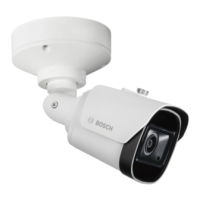
